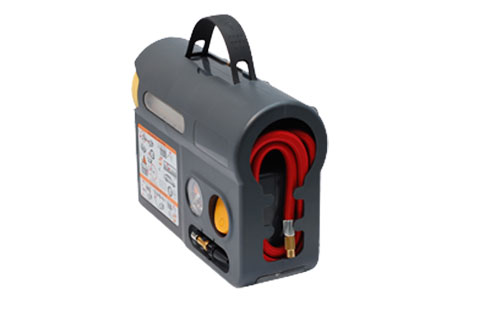Active Minds Blog
Demise of the Spare Tire: Update On A Growing Trend By Automakers To Ditch Them

Now that the next-generation of tough fuel economy standards has been approved, mandating 54.5 mpg by 2025, the scramble by automakers to eke out every last pound of weight from cars will begin in earnest.
That very likely includes a move, already underway, to forego full-size spare tires in many more vehicles, including family sedans, as we reported earlier.
Heresy, never going to happen, you may say. Not according to various sources. Edmunds.com notes that there’s been a 38 percent decrease in vehicles with full-size spare tires over the past five years, amounting to 51 models. And some 25 percent of 2011 models come equipped with tire repair kits or run-flat tires.
The Detroit News reports that five of the six biggest U.S. automakers sell vehicles without the traditional spare tire. The publication notes, however, that most passenger cars are still equipped with a temporary spare, also called a doughnut spare. The smaller temporary spare can be driven up to 55 mph and is intended to allow the driver to move the vehicle to a location where the blown-out, damaged or flat tire can be repaired or replaced.
The lone exception appears to be Honda, which still includes a spare tire in its 2011 models – all of them.
One point to keep in mind is that there’s no federal regulation requiring a spare tire. Why not? A spare tire isn’t considered a safety feature.
Generational differences?
Maybe it’s pure speculation or perhaps there’s something to the idea put forth by the Detroit News that younger drivers don’t care that much one way or the other if the spare tire goes the way of the dinosaur. They are less inclined to change tires anyway, preferring to call for roadside service from AAA or that offered through their new-car warranty. They’re likely to be more receptive to temporary spares and tire-repair kits coming standard with new cars.
Older drivers, on the other hand, many of whom have voiced rather pointed comments in various blogs about car companies doing away with full-size spares, may not be so charitably inclined to go along with the whole no-full-size-spare-in-the-family-sedan scenario.
Want a full-size spare? Buy it extra
You can, however, still get a full-size spare from some automakers for some models, but you’ll need to pay extra for it. While General Motors has repair kits standard on most of its cars and crossovers, customers can pony up an additional $100 to $150 (depending on model) to purchase an optional full-size spare, says the Detroit News, citing comments from Dave Cowger, GM’s tire engineering group manager.
Difficult choices
If you don’t like the idea of buying a car without a spare tire and/or don’t feel comfortable with just a tire-repair kit, what are your options? You still have several choices: buy an optional spare tire (if it’s available and if you have room in the trunk and don’t mind giving up precious storage space), buy a different model from the same or another manufacturer that still has a spare tire, or get used to the idea of no spare and learn about the technology.
That tire-pressure monitoring system (TMPS) that may be standard on your vehicle is really your friend. Spend some time getting familiar with how it works and you’ll know when your tires are too low on pressure and need attention.